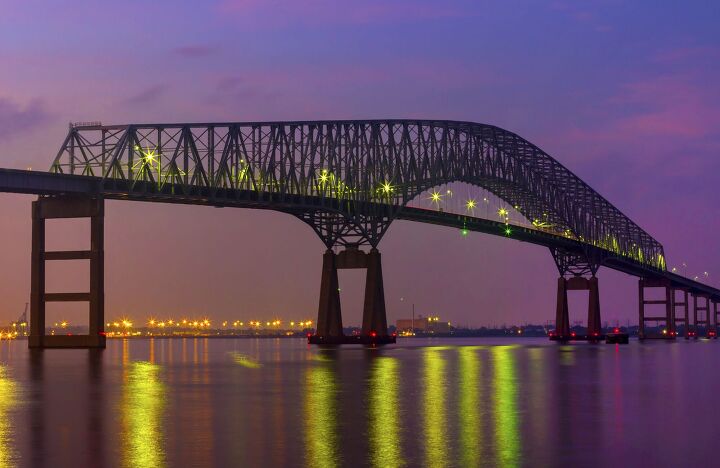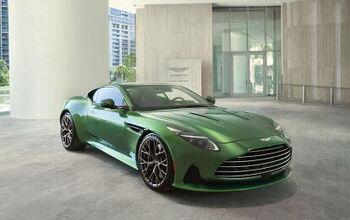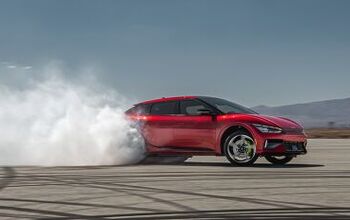Baltimore Bridge Collapse Has Major Implications for Automotive Sector

A cargo container ship exiting the Port of Baltimore collided with the Francis Scott Key Bridge early Tuesday morning. You’ve undoubtedly seen the footage by now, as well as the rampant speculation about what happened. As of now, nobody seems to know the full details of the incident but the ramifications should be relatively easy to predict. As a major shipping corridor for the United States, losing access means supply chain bottlenecks.
It simultaneously makes for a good excuse whenever the transport of goods is delayed or companies begin pitching higher rates for oceanic freight — something we saw take place in the wake of the pandemic.
The Port of Baltimore is responsible for moving all kinds of goods. But it’s most famous for passenger vehicles, semi trucks, and construction equipment. In fact, it’s typically the U.S. port that sees the largest number of cars and light trucks annually — at roughly 800,000 passenger vehicles per year.
However, losing the Francis Scott Key Bridge will effectively make the port useless until the area can be cleared of debris. Before collapsing, the bridge stood at the mouth of the port and required ships to pass beneath it to reach the docks. Until the necessary clean up has been concluded, no container ships will be able to use the port.
From Reuters:
Baltimore port's private and public terminals handled 847,158 autos and light trucks in 2023, the most of any U.S. port. The port also handles farm and construction machinery, sugar, gypsum and coal, according to a Maryland government website.
The port handles imports and exports for major automakers including Nissan, Toyota, General Motors, Volvo, Jaguar Land Rover and the Volkswagen Group — including luxury models for Audi, Lamborghini and Bentley.
Volkswagen on Tuesday said its port operations in Baltimore were unaffected by a local bridge collapse due to the location of its facilities.
"We do not anticipate any impact on vessel operations but there may be trucking delays as traffic will be rerouted in the area," the carmaker said in an e-mailed statement.
Meanwhile, logistics providers have been inundated with worried customers. The next few weeks will see numerous diversions to shipping routes and it’s likely to be several months before the port is even usable.
“Our first priority is engaging clients to make plans for containers that were originally routed to Baltimore that will be discharged at other ports on the Eastern Seaboard,” stated Paul Brashier, vice president of drayage and intermodal for ITS Logistics.
“These diverted volumes will impact the ports of New York/New Jersey, Norfolk and the Southeast and we have to prepare trucking and transload capacity to get that freight to its intended network.”
The container ship Dali that collided with the bridge was on its way out of the Port of Baltimore, en route to Colombo, Sri Lanka when it collided with one of the large pillars. The ship’s manifest stipulated that it was staffed by a 22-man crew from India. While there has been some speculation about a possible terror plot, strict terrorism seems unlikely due to the fact that the incident took place during the hours that the bridge would have been the least populated. Industrial or economic terrorism on behalf of another nation seems more likely. But there’s been no evidence to support either claim. At present, it appears to have been a terrible accident.
An investigation is underway but the only things they’ve been able to glean is what the public has already heard. Maryland Governor Wes Moore has said that the ship lost power shortly before the incident. There were also rumors of fire, however those appear to be unfounded.
Six individuals have been reported missing, though we don’t yet know who they are. Two individuals were pulled from the water. However, investigators using sonar have found that there are several vehicles located beneath the water. The Maryland Secretary of Transportation said some of those are assumed to have belonged to work crews that were present at the time of the crash.
The Singapore-flagged Dali had previously collided with a dock at Port of Antwerp in 2016. That incident was attributed to mistakes made by the master and pilot on board. Synergy Marine Group, which owns and manages the ship, confirmed the vessel hit a pillar of the bridge at about 1:30 on Tuesday morning, with every member of the crew accounted for.
President Joe Biden has reportedly said he plans to travel to Baltimore “as quickly as I can.” Statements were also made that he plans for the federal government to pick up the entire cost of rebuilding the Francis Scott Key Bridge.
“We’re going to rebuild that port together,” Biden from the White House, before departing for North Carolina to discuss the administration’s healthcare agenda as part of his reelection campaign.
If you live in the Midwest or Northeastern United States, there’s a good chance you’ll be impacted by the bridge going down. As previously mentioned, automobiles will be the primary cargo that’s to be affected. But coal, gasoline, construction materials, and a myriad of other items will likewise be impacted by the incident. Ships are already being rerouted to alternative ports. But it’ll be weeks before a comprehensive workaround is sorted out and any solution is likely to require the use of additional rail cars and trucking freight.
[Image: Alexander Briggs/Shutterstock]
Become a TTAC insider. Get the latest news, features, TTAC takes, and everything else that gets to the truth about cars first by subscribing to our newsletter.

A staunch consumer advocate tracking industry trends and regulation. Before joining TTAC, Matt spent a decade working for marketing and research firms based in NYC. Clients included several of the world’s largest automakers, global tire brands, and aftermarket part suppliers. Dissatisfied with the corporate world and resentful of having to wear suits everyday, he pivoted to writing about cars. Since then, that man has become an ardent supporter of the right-to-repair movement, been interviewed on the auto industry by national radio broadcasts, driven more rental cars than anyone ever should, participated in amateur rallying events, and received the requisite minimum training as sanctioned by the SCCA. Handy with a wrench, Matt grew up surrounded by Detroit auto workers and managed to get a pizza delivery job before he was legally eligible. He later found himself driving box trucks through Manhattan, guaranteeing future sympathy for actual truckers. He continues to conduct research pertaining to the automotive sector as an independent contractor and has since moved back to his native Michigan, closer to where the cars are born. A contrarian, Matt claims to prefer understeer — stating that front and all-wheel drive vehicles cater best to his driving style.
More by Matt Posky
Latest Car Reviews
Read moreLatest Product Reviews
Read moreRecent Comments
- Redapple2 All this BEV investment. A bigger impact (less oil consumption) would have been made if we had made PIG UP trucks smaller since 2000 and not HUGEr. (And raised gas tax by $2-3/gallon.)
- ChristianWimmer One of my clients is a company that is actually producing eFuels in Leipzig. Yes, they require a lot of energy to produce but this would not be an issue if Germany had nuclear energy or used the excess energy from wind and solar to produce these fuels. In such a scenario the energy losses wouldn’t really matter.Also, I am told that nations like Spain or the North African nations like Morocco or Tunisia could be ideal places to produce eFuels/Hydrogen due to their abundance of solar power. Again, the energy loses here would not matter since the energy used to produce these fuels is essentially “free”. If this path were pursued, Morocco and Tunisia could become wealthy nations and exporters of eFuels and Hydrogen. Countries with an abundance of solar or wind or hydro energy could be producing eFuels for their domestic consumption and export.Another argument which to me is irrelevant these days ist the poor thermal efficiency of ICE engines (25-35% gasoline, 40-45% diesel). One long trips with cruise control set to 130 km/h and even the occasional venture into the 180-200 km/h zone, my fully loaded (with my gear) A250 (2.0 4-cylinder 224-hp Turbo) can achieve an impressive gas mileage of 6 L / 100 km. That’s phenomenal - I am looking at six 1 liter bottles of water right now and that’s all my car needs to travel 100 km… amazing.So, I am a supporter of eFuels. I love internal combustion engines and if we want to use them in a climate neural way, then eFuels are a must. Also, to me every ICE car is way more sustainable and longer-lasting an an EV. Mazda, Toyota etc. are making the right move IMO.
- Blueice Once you infuse governmental unit regulation & [marketing] and taxpayerfunding, one knows quite well, dat the product or service isdestine to fail; which includes battery vehicles. Just axe yourself how revolutionary have your home batterydevices become ??? I am still waiting. after three decades, for a battery shaver whichonly requires charging two or three times per year.I am glad that I do not have a plug in Frau.
- Tassos Such a heavy breadvan on stilts, with so much HP, AND with ONLY 100 KWH Battery, I doubt if you will ever see 250 miles, let alone 300, under the best of conditions. In the winter, count on 150 miles range.And NO, it looks TERRIBLE. The only SUV that looks great is the RANGE ROVER.
- Tassos They sure are doing the right thing in the SHORT and MEDIUM term.As for the long term, in the long run, YOU'LL ALL BE DEAD, so WHO CARES.


































Comments
Join the conversation
I thought only the bobbleheads on Fox would be asinine enough to actually claim that DEI had ANYTHING TO DO WITH THIS.
Seems I was wrong, as a jughead repeats the claim and tops himself by connecting the all Indian crew with racial diversity.
Newsflash: all Indian crews ARE CHEAPER.
Please wear your white hood when posting further racist trash.
As someone born, raised and currently living in Baltimore.... here is a news flash for the dummy in chief - Baltimore is just up the road from DC! You can be there in about 40 minutes driving, probably 10 minutes in Marine 1. So, pretty lame that he says he is going to make it there "As quickly as he can". Whatever. More useless every day...